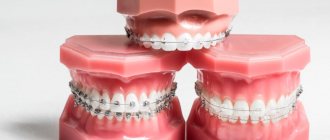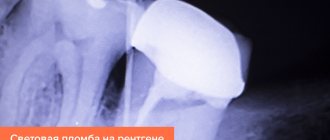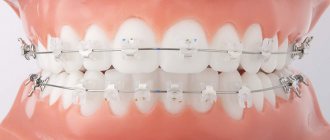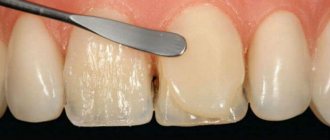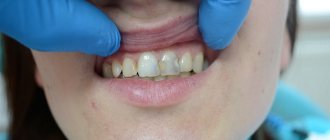Dentist
As a branch of medical science, dentistry studies everything related to teeth - their structure, varieties, etc., as well as the oral cavity. She is in charge of not only pathologies, but also norms, methods of prevention and therapy. Within this section there are three subsections - surgery, orthopedics and therapy.
Whatever a specialist does - treating caries, correcting a bite or making prosthetics - he can be called and considered a dentist. There will be no mistake in this.
This name is applicable to any specialist who deals with dental injuries, pathologies of the maxillofacial area and the oral cavity.
- pulpitis is an acute inflammatory process affecting the pulp or nerve bundle of the tooth;
- periodontitis is a pathology of bone tissue located at the base of the tooth;
- various fluxes - inflammation of the periosteum, the manifestation of which is painful swelling of the gums;
- tooth abrasion - a tendency to wear out, caused by malocclusion and metabolic disorders;
- hyperesthesia - increased sensitivity;
- hypoplasia - the appearance of spots as a result of demineralization;
- wedge-shaped defects - growths in the area where the tooth and gum meet;
- various pathologies of the oral cavity - for example, stomatitis, glossitis (inflammation of the tongue).
In dentistry, a general practitioner can be called a therapist. If, after an examination, he decides that the condition of the teeth requires the intervention of another doctor, he writes a referral to him. In addition to solving the above problems, the responsibilities of the specialist in question may include artistic restoration, bleaching and the fight against halitosis - an unpleasant odor.
Reference! Since 2010, universities began to graduate so-called general practitioners. This is done so that in a situation where the help of a specialist doctor is not required, the patient, turning to one, can receive a full range of services from him - remove stone from a tooth, cure it, remove it, apply a therapeutic bandage to the gum, etc. .
What problems does it solve?
An orthopedist is a doctor who specializes in restoring a number of teeth through prosthetics and implantation. The main task of the orthopedist is to restore the functionality of the dentition and restore the aesthetics of the smile.
The dentist ensures the integrity of the row, both with single included defects and with the complete absence of teeth and their roots. For this purpose, a variety of modern techniques are used, selected for each patient after a detailed examination.
Treatment of diseases of the maxillofacial apparatus
oneblink1/Fotolia
When treating jaw pathologies, the orthopedist must solve the following problems:
- correct diagnosis of the disease. Even minor details must be taken into account during diagnosis;
- precise determination of the appropriate treatment method, with the preparation of a specific treatment plan;
- the most approximate prediction of the results of dentition correction in terms of timing and appearance.
As a rule, treatment of jaw diseases begins with a visual examination and a detailed survey, which are carried out to obtain a general clinical picture of the pathology.
To study it in detail, additional examination methods are prescribed: orthopantomogram, radiography of the jaw, MRI. If dental diseases of the dental and periodontal tissue are detected, the orthopedist must refer the patient to a dental therapist for their relief.
The orthopedist needs to monitor all stages of treatment, from the first visit to complete elimination of the problem.
Restoration of functions: chewing, speech, swallowing
Functional restoration is carried out by eliminating defects in a number of teeth, which is carried out using various types of prosthetics. To do this, the doctor uses removable, fixed or partially removable structures.
During the recovery period, the orthopedist must ensure the correct taking of impressions, accurate production of prostheses and their high-quality installation. The doctor’s task will be not only to correctly carry out the correction, but also to monitor it in the period after installation.
Preventive
Stasique/Fotolia
The preventive tasks of an orthopedist include familiarizing patients with basic rules of oral care that would allow them to save their teeth.
He can select the optimal cleaning products for the patient and explain the rules that will maximize the life of the dentures.
Restoration of aesthetic defects
Separately, the restoration of minor defects is considered, with the preservation of the tooth root, but more than half of the upper part destroyed. To do this, they resort to microprosthetics.
The task of the orthopedist during restoration will be to restore the surface of the destroyed part of the tooth without removing the neurovascular bundle. Veneers, inlays, and lumineers, which are made from a variety of materials, are used as microprostheses.
Pediatric orthopedics
Pediatric orthopedics involves the restoration of the dentition in order to ensure the correct development of the maxillofacial apparatus and bite. In case of early loss of baby teeth, the orthopedist must promptly eliminate the gap formed, using crowns or splinting.
The features of this procedure will be described in the following video:
How is a dentist different from a dentist?
The difference is in the level of education and credentials. According to the job description, a dentist cannot perform certain types of treatment.
In practice, patients often encounter specialists without higher education, “jacks of all trades.” This situation is common in small settlements, where a medical institution has only one staff member for the treatment of oral diseases.
Take note:
- many specialists with secondary medical education claim that they perform dental treatment no worse than dentists, supporting their arguments with reviews from satisfied patients;
- but without the necessary level of knowledge it is impossible to correctly deal with a complex case and prevent side effects;
- without constant professional development, the introduction of new technologies, and modern materials, it is impossible to offer the patient the most gentle method of treatment;
- It is no coincidence that private dental clinics regularly spend considerable sums on advanced training courses and symposiums for practicing doctors.
Dentist
The specialist spent 5 years gaining knowledge at a medical institute, after 2 years he studied in residency or worked as an intern for a year. In addition to the structure of the dental system, the dentist studied physiology, anatomy, and the interaction of various organs. Biochemistry, psychology, therapy, histology, bacteriology and a dozen other subjects were on the class schedule.
After graduating from medical university, a general dentist chooses one (or several) specializations. Pediatric dentistry differs significantly from orthopedic and orthodontic treatment. A dental therapist has broader powers than a dentist, and a dental surgeon can not only administer anesthesia and remove teeth, but also perform operations on the gums and jaw bones.
Do you know who a dentist is? This is what a dentist is called in other countries. In Europe, the USA, and other Western countries, a specialist with a secondary medical education performs the same functions as a dentist in Russia.
The specialist performs the same manipulations as a dentist. In addition, a dental therapist deals with more complex problems with teeth and gums.
The doctor has a wide range of responsibilities:
- treats dental diseases: deep caries, pulpitis;
- selects and places fillings for severe tooth decay;
- carries out endodontic treatment;
- treats severe inflammation of the gums, mucous membranes, tongue;
- whitens teeth;
- carries out sanitation of the oral cavity;
- performs professional teeth cleaning with ultrasound or using Air Flow technology;
- conducts preventive examinations and gives recommendations on oral care;
- when identifying malocclusions or diseased teeth that cannot be restored, he refers the patient to specialized dentists: an orthodontist and a surgeon;
- in the absence of one or more units of the dentition, the dentist-therapist recommends a consultation with an orthopedic dentist, or “in popular parlance” – a prosthetist.
The specialist deals with the following issues:
- removes diseased teeth if the therapist has given a conclusion that restoration is impossible;
- carries out extraction (removal) of healthy teeth that interfere with the normal growth of neighboring units;
- performs correction of dental anomalies, removal of impacted (unerupted) wisdom teeth, supernumerary units;
- the help of a dental surgeon will be needed if certain units grow incorrectly, for example, in 2 rows;
- The specialist's competence includes implantation and various types of prosthetics.
Patients who have lost one or more units of dentition turn to this specialist. The doctor will help people who have ugly stumps sticking out instead of teeth, causing injuries to the mucous membrane.
What does an orthopedic dentist do:
- performs full or partial prosthetics;
- restores the beauty of a smile;
- selects the optimal method for normalizing chewing function.
Important! Before consultation with a prosthetist, it is mandatory to sanitize the oral cavity and eliminate inflammatory processes of various etiologies. A visit to the dentist or dental therapist is the first stage of orthopedic treatment.
Most people encounter a specialist in this category during their lifetime. Bite anomalies, according to statistics, are observed in 80% of residents of different countries. Some studies suggest a higher percentage of patients who are candidates for orthodontic treatment.
The main task of an orthodontist is to restore the beauty of a smile. According to scientists, bite defects not only worsen aesthetics, but also provoke serious pathologies of the gastrointestinal tract, cause headaches, and severe diseases of the gum and bone tissue.
What does an orthodontist do:
- aligns the dentition;
- eliminates wide interdental spaces, removes diastema - the gap between the “units” in the center of the dentition;;
- corrects the growth of milk and permanent units;
- gives recommendations for the prevention of malocclusions;
- controls the formation of the jaw in childhood.
Take note:
- the specialist draws up a treatment plan, takes impressions, sends the jaws for x-rays, sends the collected materials to the dental laboratory;
- after receiving the finished product, the doctor installs the design, gives recommendations for care and correct correction;
- During the entire period of treatment, the patient is observed by a doctor who installed braces, retainers or other special devices;
- The duration of correction is calculated in months, often years (especially in adults).
Removable and non-removable orthodontic structures help correct bite defects:
- stretching plates;
- bracket systems;
- veneers;
- lumineers;
- orthodontic devices;
- lip bumpers;
- retainers;
- trainers;
- aligners;
- orthodontic aligners;
- clasp devices.
Orthopedist
Patients who have lost one or more units of dentition turn to this specialist. The doctor will help people who have ugly stumps sticking out instead of teeth, causing injuries to the mucous membrane.
What does an orthopedic dentist do:
- performs full or partial prosthetics;
- restores the beauty of a smile;
- selects the optimal method for normalizing chewing function.
Important! Before consultation with a prosthetist, it is mandatory to sanitize the oral cavity and eliminate inflammatory processes of various etiologies. A visit to the dentist or dental therapist is the first stage of orthopedic treatment.
Children's dentist
Parents are often offended if “their” doctor refuses to treat their child’s teeth. The point is not the low qualifications of the pediatric dentist or the unwillingness to tolerate the whims of the young patient.
- the children's jaw has differences compared to the adult dental system;
- a slightly different approach to filling, removal of milk and permanent units is required;
- many drugs, in particular anesthetics, are not suitable for children;
- the pediatric dentist studied psychology, it is easier for him to find an approach to a frightened child;
- If there is a strong fear of the dental chair, the pediatrician uses the sedation method. Special medications that are safe for children’s bodies stop panic attacks and allow the doctor to calmly treat problem teeth.
Now you know the difference between a dentist and a dentist. If your teeth are in poor condition or have complex cases of dental disease, do not refuse to consult a specialist. Only a professional will perform prosthetics, bite correction or complex tooth extraction.
What is the difference between these concepts?
The difference between a dentist and a dentist is the level of training and the type of treatment they can perform.
The list of works provided for in the job description of a dentist includes:
- A dentist is a general specialist
diagnostics;
- treatment of relatively simple diseases of teeth and gums - gingivitis, stomatitis, caries and some others;
- removal of teeth not complicated by periodontitis;
- treatment of simple maxillofacial injuries.
- carrying out physical procedures;
- consultation regarding the choice of oral hygiene products;
- cleaning teeth from plaque and tartar, and some others.
In case of more serious dental pathologies - malocclusion, pulpitis, periodontitis, periodontal disease, lesions that have caused tooth destruction by more than 50%, and in other cases requiring the participation of a more trained specialist, the dentist gives the patient a referral to a dentist of the appropriate specialization.
A dentist is a general specialist. He has theoretical knowledge and practical skills sufficient to perform therapeutic, orthodontic, orthopedic and surgical operations.
Although, like a dentist, when faced with a particularly difficult case, he can refer the patient to a doctor of a narrow specialization.
What is the difference between a dentist and a dental therapist?
What is the difference between a dentist and a dental therapist? This formulation of the question is not entirely correct in its essence, and here’s why. Previously, in the common understanding, there was only one specialist who was approached with oral problems. Such a medical worker was simply called a dentist. But the fact is that in dentistry there is a huge number of different diseases. It was they who later became the reason for the division of the specialization of doctors into several profiles.
Cystectomy
This procedure is a partial removal of the root of a tooth on multi-rooted teeth, and is used when a cyst is detected. Cystectomy allows you to remove a small cyst while preserving the main root part of the tooth.
The procedure begins with anesthesia, after which the doctor creates access to the tooth through the gum and periodontal tissue. In the opened bed, the dentist enucleates the cyst and removes it along with the tip of the affected root.
The root canal is cleaned and filled with a special material that promotes bone tissue restoration. Despite the fact that cystectomy is a radical technique, it allows you to save the tooth and the neurovascular bundle that feeds it.
What should the temperature be after tooth extraction and how to reduce it?
Let's talk here about the use of arsenic in dentistry.
What does therapeutic dentistry do?
So, since we have touched on the topic of dividing the scope of activity of dentists, let’s take a closer look at the possibilities of therapeutic dentistry. First of all, it is worth paying attention to the fact that quite often dentists combine several specialties and a highly qualified therapist can also successfully perform the duties of a periodontist or orthopedist.
But first things first: the following health problems can put you in the chair of a dentist-therapist:
- caries,
- pulpitis,
- various fluxes,
- periodontitis,
- nerve inflammation
- gingivitis.
The main work of a dentist in this area is the artistic restoration of teeth using a wide variety of filling materials and technologies. Quite often, they also prepare the oral cavity for prosthetics.
Objectives of orthopedic dentistry
Unfortunately, teeth do not have the ability to recover. And the main task of dental orthopedics is to improve and improve the methods used in prosthetics.
In addition, orthopedic dentistry performs the following tasks:
- for the treatment of diseases of the maxillofacial apparatus using various designs;
- to restore the main functions of the patient’s dental system (chewing, speaking, swallowing);
- to keep the remaining teeth healthy;
- to ensure the aesthetic appearance of artificial and restored teeth.
Each clinic that provides orthopedic dentistry services, except for the office of an orthopedic dentist, must be equipped with a dental laboratory.
The main examination methods in such a clinic are: interview, collection of anamnesis data, examination and assessment of the condition of the oral cavity, panoramic photographs of the jaws.
Treatment of diseases of the maxillofacial apparatus
When treating jaw pathologies, the orthopedist must solve the following problems:
- correct diagnosis of the disease. Even minor details must be taken into account during diagnosis;
- precise determination of the appropriate treatment method, with the preparation of a specific treatment plan;
- the most approximate prediction of the results of dentition correction in terms of timing and appearance.
As a rule, treatment of jaw diseases begins with a visual examination and a detailed survey, which are carried out to obtain a general clinical picture of the pathology.
To study it in detail, additional examination methods are prescribed: orthopantomogram, radiography of the jaw, MRI. If dental diseases of the dental and periodontal tissue are detected, the orthopedist must refer the patient to a dental therapist for their relief.
The orthopedist needs to monitor all stages of treatment, from the first visit to complete elimination of the problem.
Restoration of functions: chewing, speech, swallowing
Functional restoration is carried out by eliminating defects in a number of teeth, which is carried out using various types of prosthetics. To do this, the doctor uses removable, fixed or partially removable structures.
During the recovery period, the orthopedist must ensure the correct taking of impressions, accurate production of prostheses and their high-quality installation. The doctor’s task will be not only to correctly carry out the correction, but also to monitor it in the period after installation.
Preventive
The preventive tasks of an orthopedist include familiarizing patients with basic rules of oral care that would allow them to save their teeth.
He can select the optimal cleaning products for the patient and explain the rules that will maximize the life of the dentures.
Restoration of aesthetic defects
Separately, the restoration of minor defects is considered, with the preservation of the tooth root, but more than half of the upper part destroyed. To do this, they resort to microprosthetics.
The task of the orthopedist during restoration will be to restore the surface of the destroyed part of the tooth without removing the neurovascular bundle. Veneers, inlays, and lumineers, which are made from a variety of materials, are used as microprostheses.
Pediatric orthopedics
Pediatric orthopedics involves the restoration of the dentition in order to ensure the correct development of the maxillofacial apparatus and bite. In case of early loss of baby teeth, the orthopedist must promptly eliminate the gap formed, using crowns or splinting.
The features of this procedure will be described in the following video:
Dentist-therapist and dentist: the difference
Everyone knows the difference between a nurse and a doctor. The difference between a dental therapist and a dentist is approximately the same. The first is a certified specialist who studied at the university and completed an internship, which makes him in demand in the modern world. By law, a dentist has the right, depending on his specialization, to deal with any problems in the oral cavity. The list of its services includes procedures of any complexity.
A specialist such as a dentist studied for only three years and received a certificate of completion of secondary education. The range of services they provide is not as wide as that of a dentist. This is precisely the main difference between the two specializations.
Dentist services
A dentist can work in a medical institution and do the following simple manipulations:
- assess the condition of the oral cavity;
- treat certain gum diseases;
- treat caries, but only at unadvanced stages;
- carry out tooth extraction if there are no complications;
- provide a service such as cleaning enamel from stone;
- install temporary or permanent fillings, but only in small areas;
- take impressions of the dentition to transfer them to the technician.
If a dentist encounters a problem in the oral cavity that he cannot solve, he is required by law to refer the patient to a dentist with a higher education.
Advantages and disadvantages
As in any profession, it is not the subject that matters, how much dentists earn, but the positive and negative nuances. The positive aspects of working as a dentist include:
The positive aspects of working as a dentist include:
- qualifications are in demand in all countries of the world;
- high profit payment;
- normal working hours;
- Private practice is possible when you have a lot of experience.
There are also negative indicators that should not be forgotten. The negative aspects include:
- greater responsibility for the patient;
- high cost of training;
- possible stressful situations at work;
- competition;
- expensive equipment and tools;
- the need to constantly improve skills;
- working with different people.
Other dental specializations
Don’t think that if you walk into an office with a “dentist” sign, he will solve all your problems. The list of diseases is wide, so no one, even the smartest doctor, can treat everything.
Dentists are divided into the following specialists:
- Therapist. People come to him with general problems.
- An orthopedist who places dentures.
- Orthodontist – helps with malocclusion.
- Surgeon - performs surgical interventions.
- Periodontist – treats gum inflammation.
- Pediatric dentist – treats children under 17 years of age.
Pediatric dentist
As far as we know, children do not have as many teeth as adults. Yes, and people over 14 years old do not have primary incisors, canines and molars. Due to the significant differences between the temporary and permanent series, patients under 17 years of age are treated and examined by a pediatric dentist. This is one of the most difficult specialties in dentistry.
The doctor must not only perfectly know all the features of changes in the teeth of young patients, but also be a good psychologist, because it is not at all easy to work with children. You need to calm, cheer and encourage the baby and only then start working directly.
The dentist does not examine children, although it seems that there are many fewer orthodontic problems under 17 years of age, which means that it will be easier to treat them. A pediatric dentist differs from a dentist in that his specialization is more responsible. There is a huge difference in the structure of the teeth of children and adults, and only a certified doctor can correctly cope with the task assigned to him.
Dental surgeon: when radical measures are needed
As you know, surgery involves surgical interventions. This is what a surgeon does in a dental clinic. People come to him if other doctors can no longer help the patient.
The surgeon will once and for all relieve you of many problems that arise in the oral cavity. This complex specialty requires a lot of attention, a lot of practice and honed skills. A specialist is consulted for a number of problems:
- trimming the frenulum of the tongue and upper lip;
- tooth extraction - partial or complete;
- diagnosis of syphilis, tuberculosis in the oral cavity;
- treatment of tumors;
- treatment of trigeminal nerve diseases;
- plastic surgery of jaw deformities, restoration of proportions;
- gum surgery;
- treatment of periodontal disease;
- installation of special implants.
Who are dentists?
In the field of dentistry, there is another concept - dentist. How is he different from a dentist and a dentist?
Essentially, a dentist is a dentist (corresponding to a medical assistant). This concept applies to dental professionals working abroad. It has not taken root in our country. And many people have heard the word “dentist” only in foreign films; in everyday life it is “unheard of.”
Since a dentist is the same as a dentist, dentists are therefore mid-level doctors, that is, without a full higher education and with a limited range of services provided.
So, having figured out who a dentist and a dentist are and realizing that these are specialists in the same medical specialization, but with different tasks, you can easily contact a dental clinic for help if the need arises.
It is worth considering that there is also a difference between a dentist and a dentist in the prices for services. Dentists' prices will be significantly higher than the price for dentists' work.
Now we know who a dentist is. We also looked at what it does and its relevance, so you can safely contact any clinic, having the right concepts about dentists and dentists.
How to save money on dental services
It is known that correcting a smile is now very expensive; not everyone can afford such luxury. And toothache is one of the most severe and impossible to endure. Particularly high prices are observed in the capital of Russia - Moscow. However, according to the law under Art. 41 of the Constitution of the Russian Federation, medical care should be provided free of charge. Of course, this statement applies to government clinics.
There are a lot of specialists in dentistry, and the activities of each of them are different. It is important to remember that you can avoid serious oral health problems and trips to dental clinics if you follow the basic rules:
- brush your teeth twice a day;
- visit the dentist once a year, even if there is no reason for this;
- Do not delay your visit if your gums become sensitive or inflamed.
By following these conditions, you will protect yourself from problems in the future. Do not be afraid of doctors; many diseases begin completely asymptomatically, and only a specialist will be able to identify the threat in time.
What is the difference between a dentist and a dental therapist?
What is the difference between a dentist and a dental therapist? This formulation of the question is not entirely correct in its essence, and here’s why. Previously, in the common understanding, there was only one specialist who was approached with oral problems. Such a medical worker was simply called a dentist. But the fact is that in dentistry there is a huge number of different diseases. It was they who later became the reason for the division of the specialization of doctors into several profiles.
Thus, a dentist is the general name for a specialist who deals with dental damage, diseases of the maxillofacial area and their direct treatment. And that means the question “What is the difference between a dentist and a dental therapist?” There is no monosyllabic or simple answer. On the one hand, it is no different, since a therapist, orthodontist, orthopedist or surgeon is just a clarification of the scope of competence. On the other hand, a dentist-therapist, being a dentist, may have absolutely no understanding of prosthetics or bite correction. And this happens not because he is a bad dentist, but only because this is the area of knowledge of specialists of a different, albeit related, profile.
One or more?
Many patients are simply sure that dentist, dentist, and dentist are synonyms, a reflection of one specialty, and there is no difference between these concepts. In fact, there are, one might say, fundamental differences.
We invite you to familiarize yourself with Fungal stomatitis and its consequences
It is no coincidence that in many clinics there are several offices in which dentists of different specialties see: therapists, surgeons, orthopedists, orthodontists, etc. Some clinics practice four-handed work, where there is a leading dentist and his assistant, who can be a dentist or dentist doctor.
What does therapeutic dentistry do?
So, since we have touched on the topic of dividing the scope of activity of dentists, let’s take a closer look at the possibilities of therapeutic dentistry. First of all, it is worth paying attention to the fact that quite often dentists combine several specialties and a highly qualified therapist can also successfully perform the duties of a periodontist or orthopedist.
But first things first: the following health problems can put you in the chair of a dentist-therapist:
- caries,
- pulpitis,
- various fluxes,
- periodontitis,
- nerve inflammation
- gingivitis.
The main work of a dentist in this area is the artistic restoration of teeth using a wide variety of filling materials and technologies. Quite often, they also prepare the oral cavity for prosthetics.
